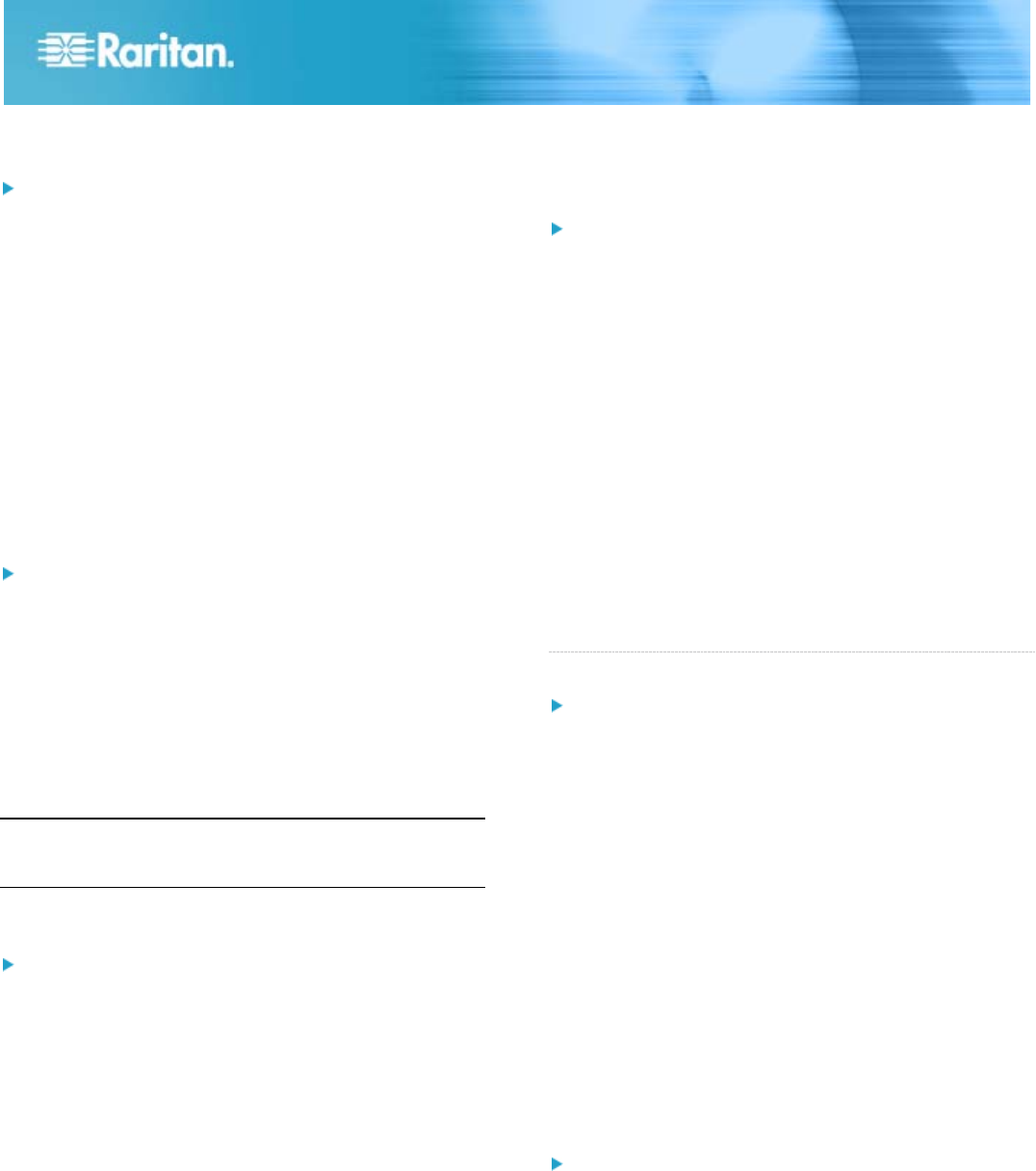
KX II Quick Setup Guide 5
QSG-DKX2-v2.1.10-0F-E y 255-62-4022-00
Naming Target Servers
To name the target servers:
1. Connect all of the target servers if you have not already
done so.
2. Using the KX II Local Console, choose Device Settings >
Port Configuration. The Port Configuration page opens.
Specifying Power Supply Auto Detection
The KX II provides dual power supplies and can automatically
detect and provide notification regarding the status of these
power supplies. Proper configuration ensures that the KX II
sends the appropriate notifications should a power supply fail.
The Power Supply Setup page is configured to automatically
detect both power supplies when two power supplies are
used. If only one power supply is used in your configuration,
you can disable automatic detection from the Power Supply
Setup page.
To enable automatic detection for the power supplies
in use:
1. Choose Device Settings > Power Supply Setup. The
Power Supply Setup page opens.
2. If you are plugging power input into power supply number
one (left-most power supply at the back of the device),
select the Powerln1 Auto Detect option.
3. If you are plugging power input into power supply number
two (right-most power supply at the back of the device),
select the Powerln2 Auto Detect option.
4. Click OK.
Note: If either of these checkboxes is selected and power
input is not actually connected, the power LED at the front of
the device turns red.
Creating User Groups and Users
To add a new user group:
1. Open the Group page by selecting User Management >
Add New User Group or clicking the Add button from the
User Group List page.
The Group page is organized into the following
categories: Group, Permissions, Port Permissions, and IP
ACL.
2. Type a descriptive name for the new user group into the
Group Name field (up to 30 characters).
3. Set the permissions for the group. Select the checkboxes
before the permissions you want to assign to all of the
users belonging to this group.
4. Set the port permissions. Specify the server ports that can
be accessed by users belonging to this group (and the
type of access).
5. Set the IP ACL. This feature limits access to the KX II
device by specifying IP addresses. It applies only to users
belonging to a specific group, unlike the IP Access Control
list feature that applies to all access attempts to the device
(and takes priority).Optional
6. Click OK.
To add a new user:
1. Open the User page by choosing User Management > Add
New User or clicking the Add button on the User List page.
2. Type a unique name in the Username field (up to 16
characters).
3. Type the person's full name in the Full Name field (up to
64 characters).
4. Type a password in the Password field and retype the
password in the Confirm Password field (up to 64
characters).
5. Choose the group from the User Group drop-down list.
The list contains all groups you have created in addition to
the system-supplied default groups. <Unknown>, which is
the default setting, Admin, Individual Group.
6. To activate the new user, select the Active checkbox. The
default is activated (enabled).
7. Click OK.
QS Rule
Step 5: Launch the KX II Remote Console
To launch the KX II Remote Console:
1. Log in to any workstation with network connectivity to your
KX II and Java Runtime Environment installed (JRE is
available on the Java website http://java.sun.com/).
2.
Launch a supported web browser such as Internet
Explorer (IE) or Firefox.
3. Type the following URL: http://IP-ADDRESS, where
IP-ADDRESS is the IP address that you assigned to your
KX II. You can also use https, the DNS name of the KX II
assigned by the administrator (provided that a DNS server
has been configured), or just simply type the IP address in
the browser (KX II always redirects the IP address from
HTTP to HTTPS.) The Login page opens.
4. Type your Username and Password. Click Login.
Access and Control Target Servers Remotely
The KX II Port Access page provides a list of all KX II ports,
the connected target servers, their status, and availability.
Accessing a Target Server
To access a target server:
1. Click the Port Name of the target you want to access. The
Port Action Menu is displayed.
2. Choose Connect from the Port Action menu. The video
display switches to the target server interface.
